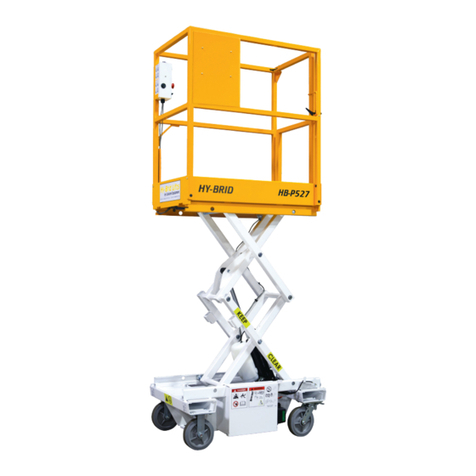
TABLE OF CONTENTS
NOTES.......................................................................................................................................................................................... 2
FOREWORD ................................................................................................................................................................................ 3
TABLE OF CONTENTS............................................................................................................................................................... 4
INDEX OF FIGURES.................................................................................................................................................................... 5
SECTION 1 | SAFETY.................................................................................................................................................................. 6
1.1 | SAFETY SYMBOLS.......................................................................................................................................................................... 6
1.2 | GENERAL RULES AND PRECAUTIONS ................................................................................................................................... 6
1.3 | SAFETY GUIDELINES.................................................................................................................................................................... 7
SECTION 2 | MAINTENANCE ................................................................................................................................................... 8
2.1 | BATTERY MAINTENANCE........................................................................................................................................................... 8
2.2 | CHARGING THE BATTERY.........................................................................................................................................................8
2.3 | LUBRICATION.............................................................................................................................................................................. 10
2.4 | COMPONENTS REQUIRING ADJUSTMENT....................................................................................................................... 10
2.5 | EXAMINATION, REPAIR, REPLACEMENT OF LIMITED LIFE COMPONENTS..............................................................10
2.6 | SAFETY DEVICES AND SYSTEMS REQUIRING CHECKS ............................................................................................... 10
2.7 | STORAGE......................................................................................................................................................................................10
2.8 | MAJOR ALTERATIONS OR REPAIRS...................................................................................................................................... 10
2.9 | OTHER PROCEDURES.............................................................................................................................................................. 10
SECTION 3 | MAINTENANCE CHECKLISTS ..........................................................................................................................11
3.1 | PRESTART INSPECTION CHECKLIST................................................................................................................................... 12
3.2 | MONTHLY INSPECTION CHECKLIST ................................................................................................................................... 13
3.1 | PREDELIVERY/ANNUAL/FREQUENT INSPECTION CHECKLIST................................................................................... 14
SECTION 4 | TECHNICAL REFERENCES .............................................................................................................................. 16
4.1 | HYDRAULIC SCHEMATIC ......................................................................................................................................................... 16
4.2 | ELECTRICAL SCHEMATIC........................................................................................................................................................ 18
4.3 | CONTROL BOARD DIAGNOSTICS........................................................................................................................................20
SECTION 5 | WIRING DIAGRAMS.......................................................................................................................................... 22
5.1 | WIRING DIAGRAM .....................................................................................................................................................................23
5.2 | LOWER CONTROLS WIRING DIAGRAM ..............................................................................................................................24
5.3 | UPPER CONTROLS WIRING DIAGRAM................................................................................................................................26
5.4 | MAIN POWER/SAFETY CIRCUIT.............................................................................................................................................28
5.5 | DRIVE CIRCUIT ...........................................................................................................................................................................30
5.6 | ELEVATE/LOWER CIRCUIT ......................................................................................................................................................32
SECTION 6 | TROUBLESHOOTING FLOWCHARTS ...........................................................................................................34
6.1 | MAIN POWER/SAFETY CIRCUIT.............................................................................................................................................34
6.2 | DRIVE CIRCUIT...........................................................................................................................................................................36
6.3 | ELEVATE CIRCUIT ......................................................................................................................................................................38
6.4 | LOWER CIRCUIT........................................................................................................................................................................ 40
SECTION 7 | PARTS DIAGRAMS.............................................................................................................................................42
7.1 | SAFETY AND CONTROL DECALS...........................................................................................................................................42
7.2 | MAIN POWER/SAFETY CIRCUIT .............................................................................................................................................43
7.3 | DRIVE CIRCUIT............................................................................................................................................................................44
7.4 | ELEVATE / LOWER CIRCUIT ....................................................................................................................................................46
7.5 | COVERS.........................................................................................................................................................................................48
7.6 | RAILINGS.......................................................................................................................................................................................49
SECTION 8 | WARRANTY........................................................................................................................................................50
SECTION 9 | ADDITIONAL RESOURCES .............................................................................................................................. 52
NOTES........................................................................................................................................................................................54
MAINTENANCE & TROUBLESHOOTING
HB1230
SUPO646
REV A
4
Revision Log
Revision A..........................................................................................................................................................................December 2013
INDEX OF FIGURES
FIGURE 1: Battery Charger LED Display .............................................................................................................................................. 9
MAINTENANCE & TROUBLESHOOTING
HB1230
SUPO646
REV A
5






































